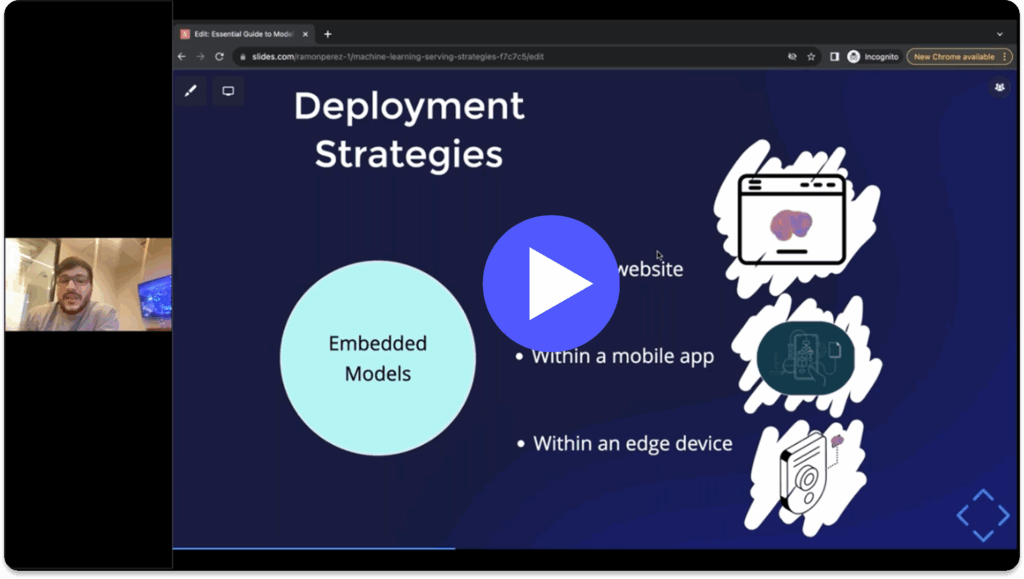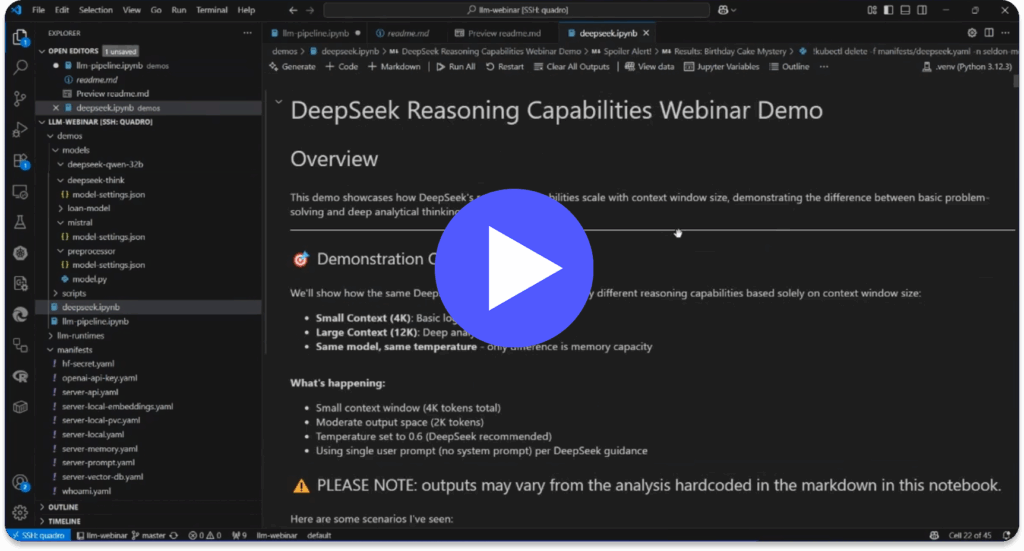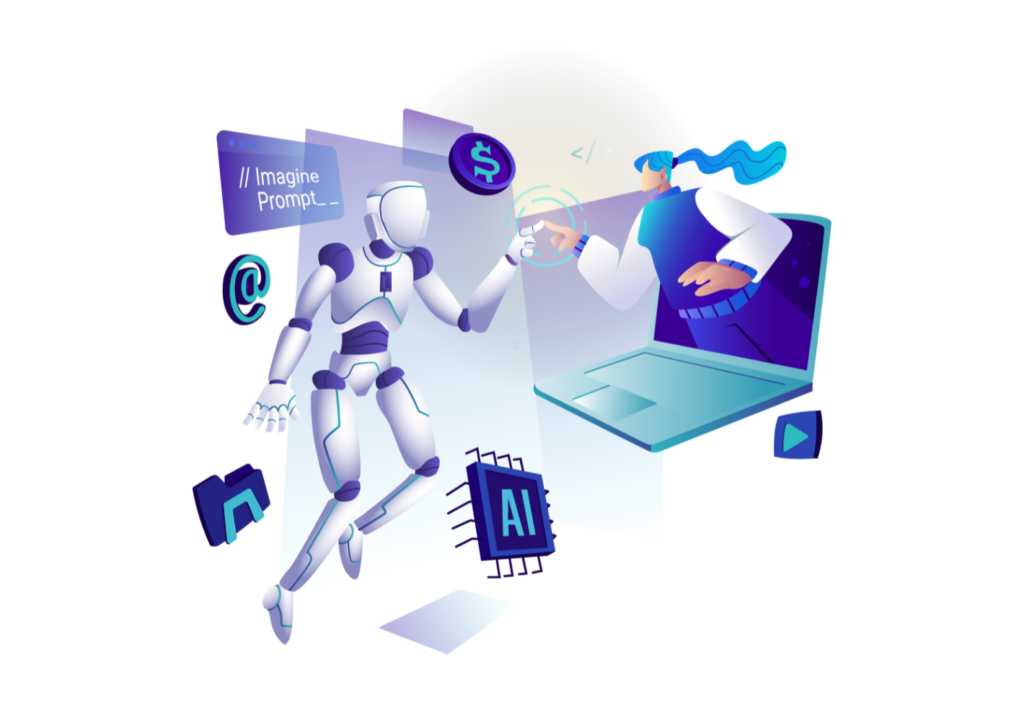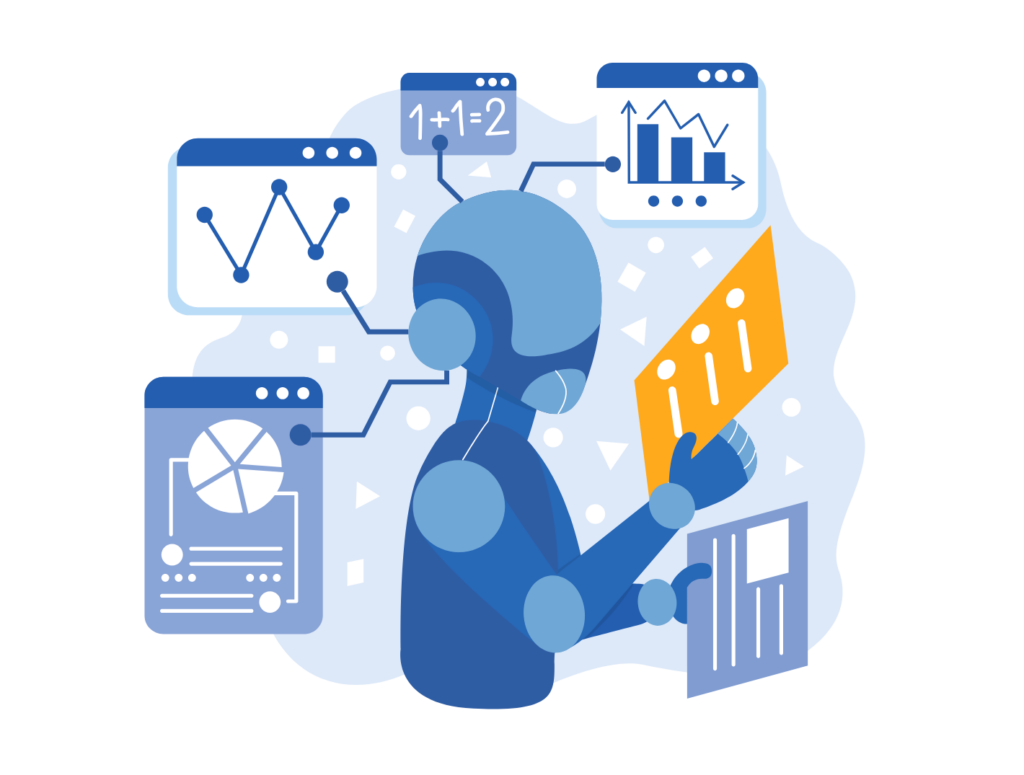Machine learning (ML) is a process by which a system learns from data to undergo iterative improvement without direct human control. Instead of operating on a static algorithm designed by a programmer, the algorithm is trained on sample data to create a model which makes sense of the data.
- Models can be used to provide insights from live data, make predictions, or categorize unsorted datasets.
- Algorithms improve through experience, which means a system can develop and evolve without constant human interaction.
In our world of data saturation, machine learning allows systems to spot trends and changes in datasets. It may not be possible to complete certain complex tasks through fixed algorithms designed by human programmers. Instead, ML means flexible and responsive algorithms that learn from data and experiences. It’s tied to a huge increase in data in the modern world, and the improvements in technology and computing which can handle more complex algorithms. ML is only going to become more important – and intelligent – as technology and data progresses.
Current usage includes speech recognition tools, spam filters, automated banking and stock trading systems, and a range of predictive analytics for businesses. Let’s explore what the future may hold and the challenges faced.
How does machine learning work?
By identifying trends and patterns in datasets, it learns the relationship between each data point. The model is typically created from training data, which is used to develop and fine-tune the algorithm before deployment. It usually requires a large training dataset to build its model.
Once the algorithm is performing to a high accuracy on the training data, the system can be launched for new data. It can then be used to predict changes in continuous data, or categorize data points into segments.
The system will have learned and improved from experience, and will contextualize each data point. The idea is to drive continuous improvement to a given algorithm without the need for controlling human interaction. Organizations and businesses can use models to perform a range of functions like customer service or product recommendations, and automate menial but complex tasks and processes.
Although the term was created as far back as the 1950’s, there are a number of reasons for the escalating interest because modern computers and systems are more powerful than ever, meaning complex tasks can be performed by ML systems. The storage and collection of large volumes of data has also increased considerably over the last few decades. With the rapid expansion in popularity of e-commerce sites, digitalization, search engines, and social media platforms, data has never been more accessible.
Large datasets (or big data) improve the accuracy of machine learning algorithms, lowering the risk of outliers or misinterpreted trends from smaller datasets. Modern businesses are increasingly at ease with embedding data in their decision-making processes, so the environment is established for widespread use of ML systems.
What is machine learning used for?
Broadly used in two ways: to classify data against a known model, or to predict a trend or outcome. The first use may include the classification of an email as spam or not spam as part of the filtering process. A model would go beyond a simple filter rule to recognize the traits of a spam email. An example of the second use could be to predict property price fluctuations using historical housing data.
Systems have a vast array of uses, performing any task which can be learned through data rules, as it is as varied as the type of data it can be fed. In the modern world a huge range of datasets are available, such as text, images, quantitative data, or audio. Learning patterns and trends in datasets have a range of functions. This can be used to detect unusual behavior in personal banking to trigger an account freeze, or to make recommendations to users based on their interests and interactions.
Algorithms and systems are trained to spot emerging data trends and predict outcomes. It’s also widely used to improve and evolve speech recognition tools, deliver personalized customer service, and automate areas of industries like stock trading too.
Examples include:
- Identifying specific subjects in a series of images – Having been trained with correctly labelled image datasets, the machine learning algorithm can categorize new images based on this model. Training data in the real world could be images alongside their connected social media tag.
- Automation of processes such as risk assessments or customer demand – For example an algorithm may identify lender risk in large datasets for mortgage providers. These models can identify trends that a human business analyst may miss.
- Email spam filtering – Algorithms can be trained to identify spam emails on content style or tone.
- Automatic and responsive product pricing – Online stores selling products and services can use a model to automatically adjust prices depending on a range of data including customer demand, timing, and competitor prices.
- Voice recognition to auto generate video captions through speech to text – Voice assistant technology is also improved and developed through machine learning, a model which interprets and provides a response to user queries.
- Online recommendation services based on user preference – Many digital services will utilize machine learning to identify trends in user data to provide recommended products to users. This could be in video or audio streaming services, or e-commerce websites.
Types of machine learning
Different types of algorithms can be categorized by the system’s learning style. How the system learns and experiences data to improve the algorithm is intrinsically linked to the purpose of the algorithm. Each type of algorithm can be used for different purposes or end goals.
The main types of machine learning include:
- Supervised machine learning
- Unsupervised machine learning
- Semi-supervised machine learning
- Reinforcement machine learning
Supervised machine learning
Supervised machine learning is when a programmer or trainer provides the system with the input data and correct output. The machine learning algorithm will generate a model built on the relationship between the input and output data. A large volume of labelled data is fed into the system, which can then identify the trends or patterns between the input and correct output from the training data. The algorithm will then predict the output based on this pattern for any newly added data.
It’s called supervised machine learning as the algorithm is reliant on training data. A human programmer will decide the correct result of the inputted data, and the machine is trained until it reaches a specified level of accuracy. It can be used to classify new data against the established pattern, or predict outcomes for new data.
Unsupervised machine learning
Unsupervised machine learning has no target input from a human programmer in contrast with supervised machine learning. In this type, there are no labels for the dataset. Instead, the algorithm is used to detect trends and patterns within the dataset. Algorithms created in this way can help detect the rules or patterns which govern the data, so are used to gain insights. Unsupervised machine learning algorithms will be used to understand how different data associates with other data, or to cluster data points into categories. It is useful to categorize and group complex datasets, such as audience segmentation. It may also identify trends in data which were previously unknown.
Semi-supervised machine learning
Semi-supervised machine learning is a blending of the supervised and unsupervised machine learning types. In this case the labels of all the data may not be known, but it is still important to group the information. For example a lack of resources or time constraints may stop all data being properly labelled. Semi-supervised machine learning can take a subsection of labelled data to create a model which encompasses all the data.
Reinforcement machine learning
Reinforcement machine learning is the process of a system optimizing and improving an algorithm through interactions with its environment. The algorithm learns and improves through a reward feedback loop, in which the system chooses the best action depending on its current environment.
Through a process of trial and error, the machine trains itself to perform specific actions or make decisions. This trial and error approach is in contrast to the training data used within supervised machine learning. In this case, the machine learns and improves based on its previous experience. Successful actions are reinforced, so a system can learn the most effective way of solving a problem.
Optimize marketing campaigns or perform complex actions like playing chess or driving ‘driverless’ cars. Each move or interaction with the environment is fed back and learnt from so the system can determine the best possible action in a specific situation.
Challenges and risks
There are a range of challenges faced by organizations when developing or utilizing a machine learning model. These span from the reliability of the data, bias in the process, or mistrust of results. For any organization to adopt machine learning systems, these challenges will need to be overcome for best results. Otherwise, there is a risk of a badly performing algorithm developed from low quality data.
Poor quality training data
Machine learning models generally rely on training data during development. If the quality or quantity of this data is low, the accuracy of the algorithm will be affected. It currently takes a huge amount of data to accurately train a machine learning model. If the data is incomplete, it risks making rules and assumptions from just a segment of data, negatively affecting its accuracy. Likewise, if the quality of data is poor then the trends identified by the model will be skewed. Ensure the data is cleaned and labelled to achieve the most accurate results.
Bias in training data
If the training data isn’t properly representative, the resulting algorithm will have inbuilt bias. Representative data should be utilized during training, and time should be spent investigating any underlying bias in the datasets. Common bias could be datasets based on popularity, especially across different locations. For example, a predictive model based on social trends data in one country will likely be inaccurate if predicting trends in a separate country. Small samples of data can also cause unintended bias, so the method of data collection should also be scrutinized. Models should be retrained with data that’s representative of the target audience or dataset.
Mistrust of results
As machine learning becomes widespread in different organizational settings, the challenge is to gain trust in new processes. Stakeholders will want to know how and why a model has made a prediction, especially if it goes against their own views or knowledge. Transparency will be key to gaining trust in the process, so that data-led decisions can be made with confidence.
What is the future?
Technology and connectivity has advanced to improve the scale and scope of machine learning systems today. With off the shelf solutions, machine learning systems are becoming more accessible than ever. Advancement in technological capabilities and access to machine learning models will only improve in the future. As machine learning improves and evolves iteratively, it will become a mainstay of modern life. It will have an impact on how users interact with systems, and how businesses run their operations.
The future of machine learning may mean:
- A new normal for applications and businesses
- Reactive and evolving model training
- The next step in natural language processing
A new normal for applications and businesses
More industries and sectors will adopt machine learning as the new normal for applications and software. It is already used in the customer service and retail sectors, but the range of off-the-shelf products will increase in a variety of sectors. This means more accurate software services and better access to trend analysis of data. Applications will increasingly have elements of machine learning included, leading to a more personalized automated service for customers and users.
Better predictive analytics will change how organizations function, making data-led decisions and predictions straightforward. Stock control, customer attrition monitoring, HR systems, and customer experience systems are all areas that will be enhanced by machine learning systems.
Reactive and evolving model training
As the training of models improves, algorithms will achieve greater accuracy. Currently most models are developed in offline environments using training data then deployed to accept live data. However, using static training data in this way risks the model becoming out of date as wider trends evolve, especially over years of use. Customer data in offline models will naturally lag behind live changes in customer makeup and trends. In the future, more models will be continuously trained and retrained on up-to-date datasets. The result will be reactive and accurate models which evolve alongside wider market changes.
The next step in natural language processing
ML is already a key element of natural language processing research, most noticeable in assistive technology software. The ability of machine learning systems to improve iteratively and take into account the context of data makes it a key tool in decoding spoken language. Better processing between human speech or written word and a system means seamless communication between user and machine. Natural language processing systems will greatly improve communication between humans and systems, and its evolution will be driven by machine learning.
Real-Time Deployment at Scale, Managed Your Way
Seldon moves machine learning from POC to production to scale, reducing time-to-value so models can get to work up to 85% quicker. In this rapidly changing environment, Seldon can give you the edge you need to supercharge your performance.
With Seldon, your business can efficiently manage and monitor machine learning, minimize risk, and understand how machine learning models impact decisions and business processes. Meaning you know your team has done its due diligence in creating a more equitable system while boosting performance.
Talk to our team about machine learning solutions today –>







